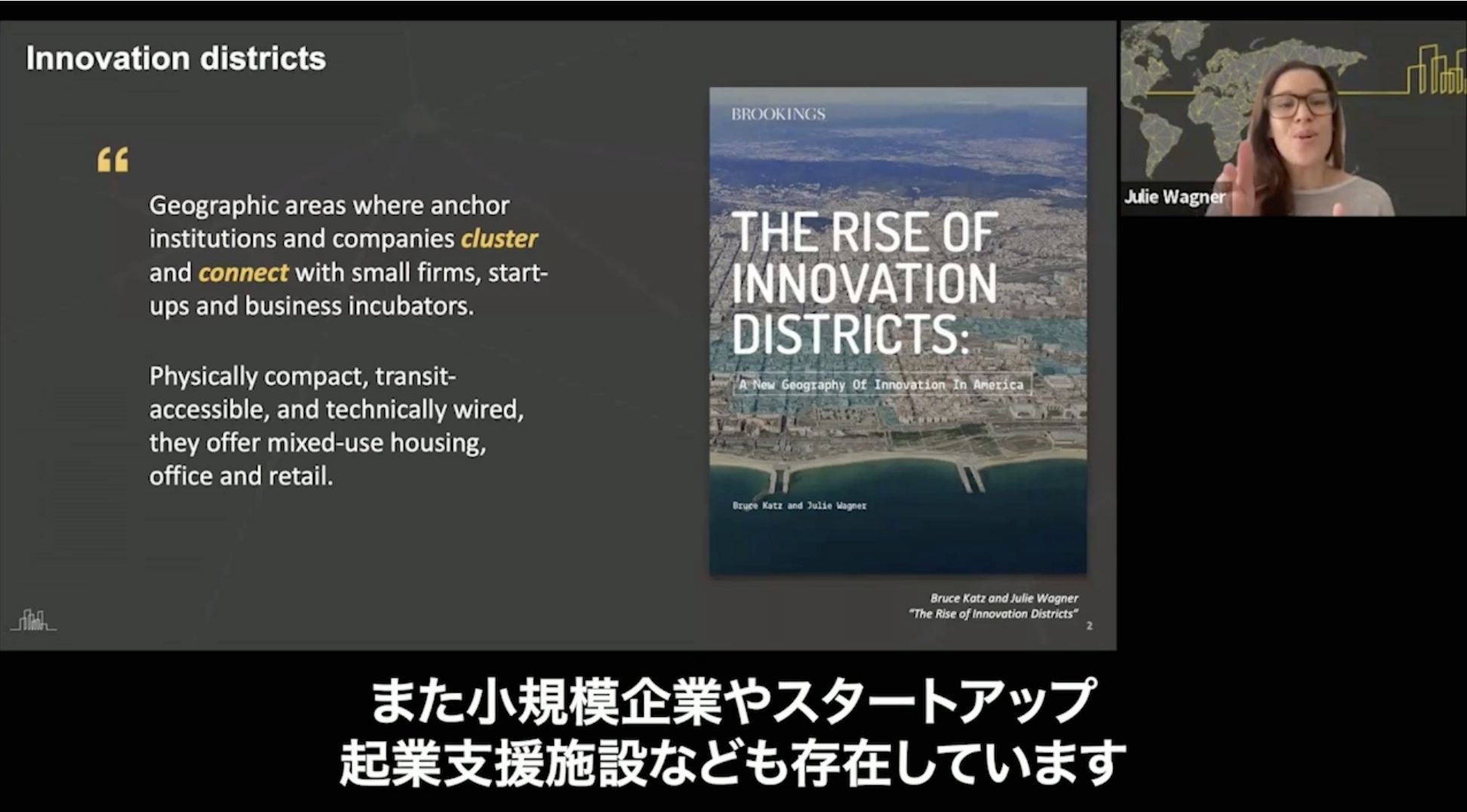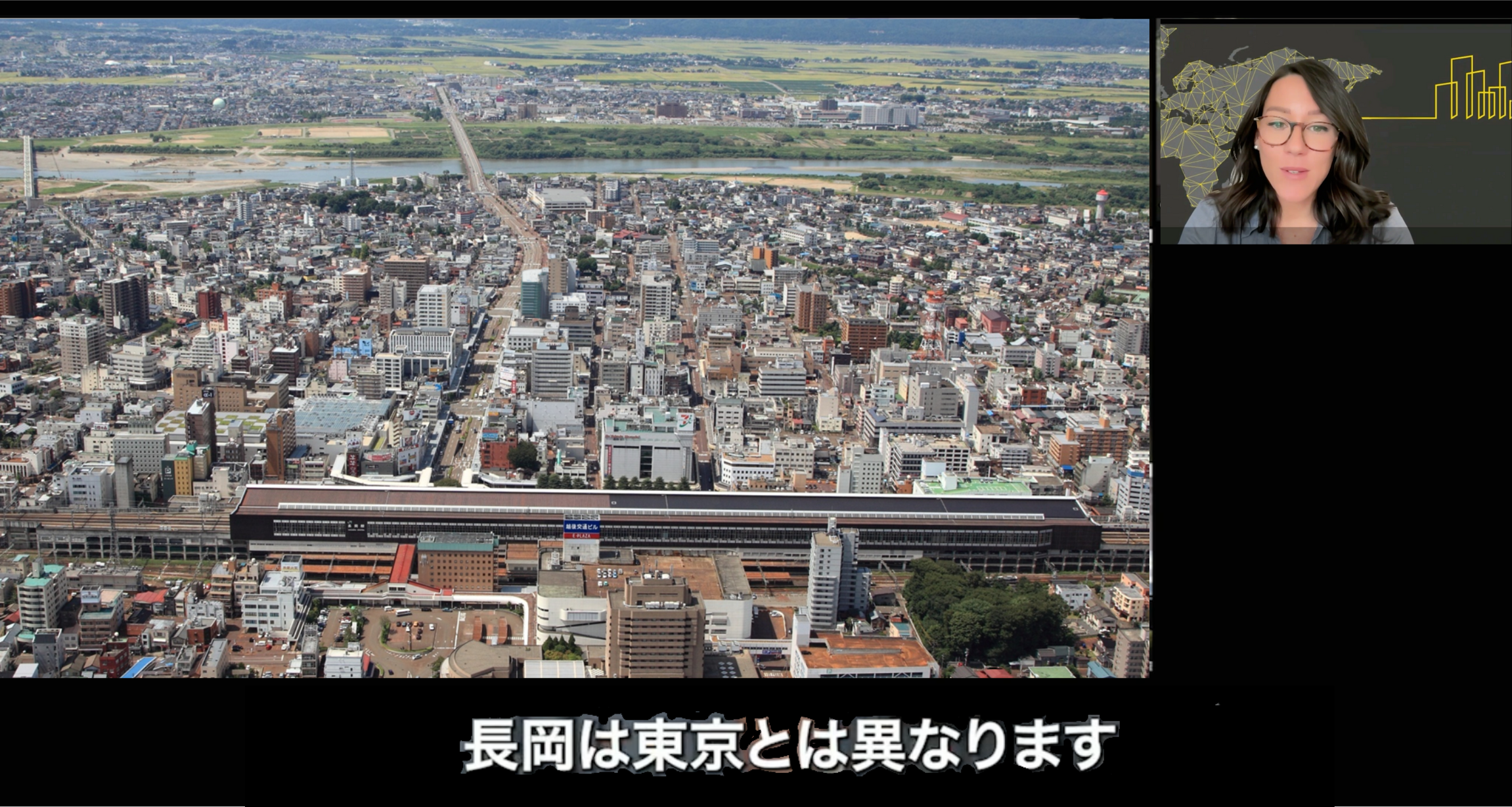GIID President & Co-Founder Julie Wagner and Senior Research Associate Laura Biancuzzo joined Smart City Institute-Japan (SCI-Japan)’s special forum to talk about innovation districts as a real lever for change in the Japanese innovation landscape.
The forum—The Horizontal Expansion of Digital Public Goods Linked to Liveable Well-Being City Indicator and Regional Revitalization 2.0— convened domestic and international experts to explore how place-based innovation can advance resilience, sustainability, and regional development.
Wagner underscored that innovation districts are not a passing trend, but a practical response to urgent challenges: from decarbonization and resilient infrastructure to regional redevelopment and improved well-being. She highlighted how compact, mixed-use environments—where universities, firms, startups, and civic actors cluster together—enable faster collaboration and scalable solutions to complex societal problems. What matters, she emphasized, is not just having the players, but having them all physically close; with mixed land uses (offices, housing, retail), connected by good transit access, walkability, and strong public spaces.

Resilience, well-being, regional redevelopment, infrastructure, and decarbonization — Innovation districts provide a powerful avenue through which each of these can be explored and advanced in new ways
Julie Wagner, GIID President
Biancuzzo drew on her recent visits to Tokyo and Nagaoka to offer a grounded perspective on Japan’s innovation landscape. She noted that despite world-class talent, technology, and R&D investment, Japan struggles with innovation capacity and productivity in part because universities are often located far from industry hubs, making daily collaboration difficult. In Tokyo, researchers and startups are beginning to co-locate, but ecosystems remain fragmented. Nagaoka, by contrast, offers a promising model, aligning city government, universities, and local firms into a walkable, connected district rooted in local culture.
What’s powerful here is that Nagaoka is not trying to replicate any other district worldwide, but it’s crafting something special that feeds the local culture that works for Japan
Laura Biancuzzo, Senior Research Associate

Both speakers emphasized that realizing Japan’s ambitions will require intentional leadership across government, academia, and industry. They highlighted the opportunity for municipalities to organize around existing assets, adopt governance structures that sustain collaboration, and create policies that enable cross-sector partnerships.
SCI-Japan is a not-for-profit, private sector–led platform that promotes the expansion and advancement of smart cities with the goal of improving the well-being of residents. It does so by curating policy recommendations; fostering co-creation among industry, government, academia, and civil society; and developing its signature Liveable Well-Being City Indicator. Its membership spans over 800 public, private, and social sector organizations actively engaged in smart city and regional development work, including government ministries, city leadership, universities and research institutions. The organization convenes special forums once a year on various themes related to smart cities to spark high-impact discourse and networking.
GIID’s participation in this forum reflects its mission to advance the innovation district model globally through independent research and practitioner networks. By sharing international experience and highlighting Japan’s opportunities, Wagner and Biancuzzo underscored the importance of place-based strategies for achieving sustainable and inclusive growth. They noted that, while Japan is at an early stage compared to some other countries in developing fully-fledged innovation districts, the opportunity is real and the foundations are in place.
View the full video on Nikkei Channel: https://channel.nikkei.co.jp/2507sci-japan/20250715sci_09.html

